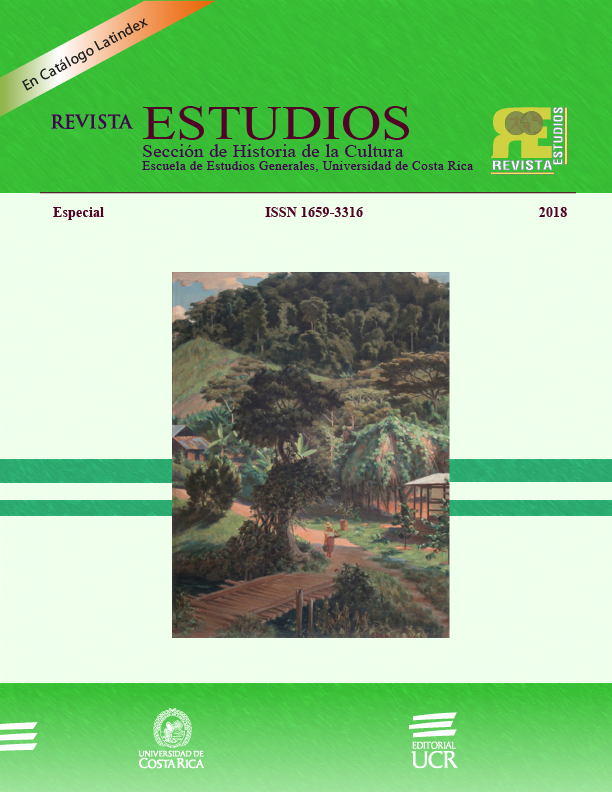Abstract
Some trees are hierophanies manifestations. In this study of indoamerican mythology will be analyzed, mainly, etiological myths, related with the tree, which is going to reveal the sexuality background between the sacred and profane, and where sacrifice has a primordial aspect. Through many mythics motifs it will show that trees figure in the origin time (as founders of humanity) and the ending times, as it happens with nahuas and the archetype tree of Chichihualcuauhco (mammas tree), which nourished the dead babies. Some trees have had sexual relations with human beings and by this way some dwarfs have been born (as Catorce Fuerzas)or the generation has been preserved, as in the Pop Wuj, after a sacrifice, when Hun-Hunahpú´s head (as jicara tree) makes pregnant the young Ixquic. These numinous characteristics will permit to establish parallelisms between different myths, for example, the event mentioned of Pop Wuj, according to the pregnancy of Virgin Mary.References
Barnstone, W. (editor). (1984). The Other Bible. Ancient Alternative Scriptures. New York: Harper Collins Publishers.
Bataille, G. (2002). El erotismo. 3ª ed. Barcelona: Tusquets Editores.
Biblia de Jerusalén. (1998). Bilbao: Desclée de Brouwer.
Chase-Sardí, M., Siffredi, A., Cordeu, E. (1992). El gateo de los nuestros. Narrativa erótica indígena del Gran Chaco. Buenos Aires: Ediciones del Sol.
Chávez, A. (1987). Pop Wuj. Libro del tiempo. Buenos Aires: Ediciones del Sol.
Chevalier, J (ed.). (2003). Diccionario de símbolos. Tomo I. Barcelona: Herder.
Chinchilla, K. (2010). Conociendo la mitología. San José: Editorial de la Universidad de Costa Rica.
Cobián, D. (1999). Génesis y evolución de la figura femenina en el Popol Vuh. México D.F.: Plaza y Valdés.
Christensen, M. (2010). The Tales of Two Cultures: Ecclesiastical Texts and Nahua and Maya Catholicisms. The Americas, Vol. 66, No. 3, Evangelization as Performance (Jan., 2010), pp. 353-377.
Duch, L. (1998). Mito, interpretación y cultura. Aproximación a la logomítica. Trad. Francesca Babí, Domingo Cía. Barcelona: Herder.
Eliade, M. (1981). Lo sagrado y lo profano (4ª ed.). Barcelona: Editorial Labor.
_______ . (1996). Historia de las creencias y de las ideas religiosas. Barcelona: Editorial Herder.
Foucault, M. (2011). Historia de la sexualidad.3ª ed., III volúmenes. México D.F.: Siglo XXI editores.
González, Y. (ed.). (1995). Diccionario de Mitología y Religión de Mesoamérica. México: Ediciones Larousse.
Harley, A. (1964). The Mythology of all races, Vol. XI. New York: Cooper Square Publishers.
Huete, F. (2015). La Influencia de la Fenomenología de la Religión de Rudolf Otto y Mircea Eliade en el Pensamiento de Peter L. Berger. Revista Portuguesa de Filosofia, T. 71, Fasc. 1, Fenomenologia e Filosofia Prática/Phenomenology and Practical Philosophy (2015), pp. 102-115.


